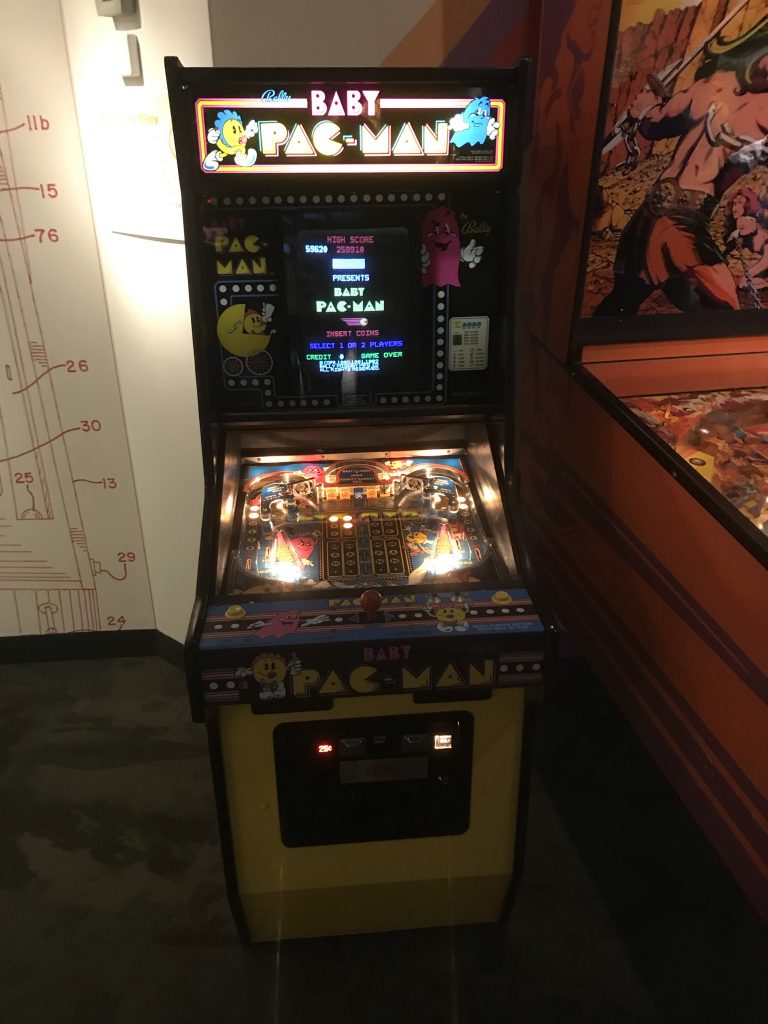
Baby Pac-Man
Manufactured in October 1982 by the Bally-Midway Company.
When I came to the Strong’s pinball exhibit, I was excited to try out quite a few of the novel and historic games in their collection. I thought I may play USA Football a two player football-esque experience with a friend or perhaps I’d try the monolith Hercules the largest, but otherwise mediocre, pinball machine ever made. The game that caught my eye was none other than the quasi-legal Baby Pac-Man.
Back in the early 80’s, Midway had struck gold. They had a deal with one of the biggest Japanese arcade companies, Namco and their meteoric success Pac-Man. While the profits were high, Midway was patiently awaiting for Namco to make a sequel to jump in on the mass craze. To get around this, Midway used the Pac-Man license on games that were not designed or approved by Namco. The first of these was Ms. Pac-Man, a retooling of a prior unauthorized Pac-Man hack called Crazy Otto. Midway was still splitting the revenue with Namco, but Namco was enraged with Midway for stepping outside the bounds of their license agreement. Subsequently, Midway continued to make unauthorized Pac-Man games until eventually Namco decided enough was enough and terminated their partnership. Baby Pac-Man is one of the last and the rarest of these Midway cash-ins, only trumped by Jr. Pac-Man in chronology.
I knew the moment I saw it that I had to play it, I may never get another chance, Bally-Midway only manufactured about 7000 of these machines, many of which have gone out of commission . More importantly than that, the game’s strange integration of pinball and video game drew me in.
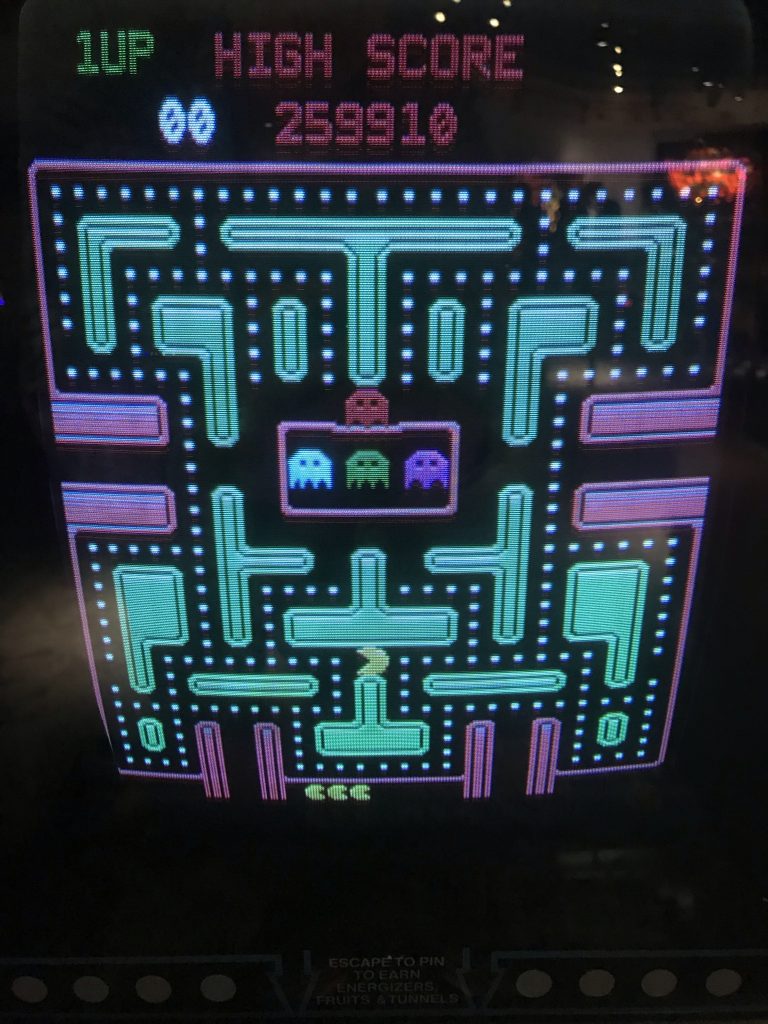
Baby Pac Man works in a bizarre fashion. You start by playing your standard Pac-Man shenanigans, collecting pellets while avoiding the ghosts. However you may notice that the power pellets from the original game are omitted in this maze. That’s because Baby Pac-Man will not give them to you, you must earn them. The two hallways / passages / “escapes” at the bottom of the screen allow you to go to the pinball portion of the game.
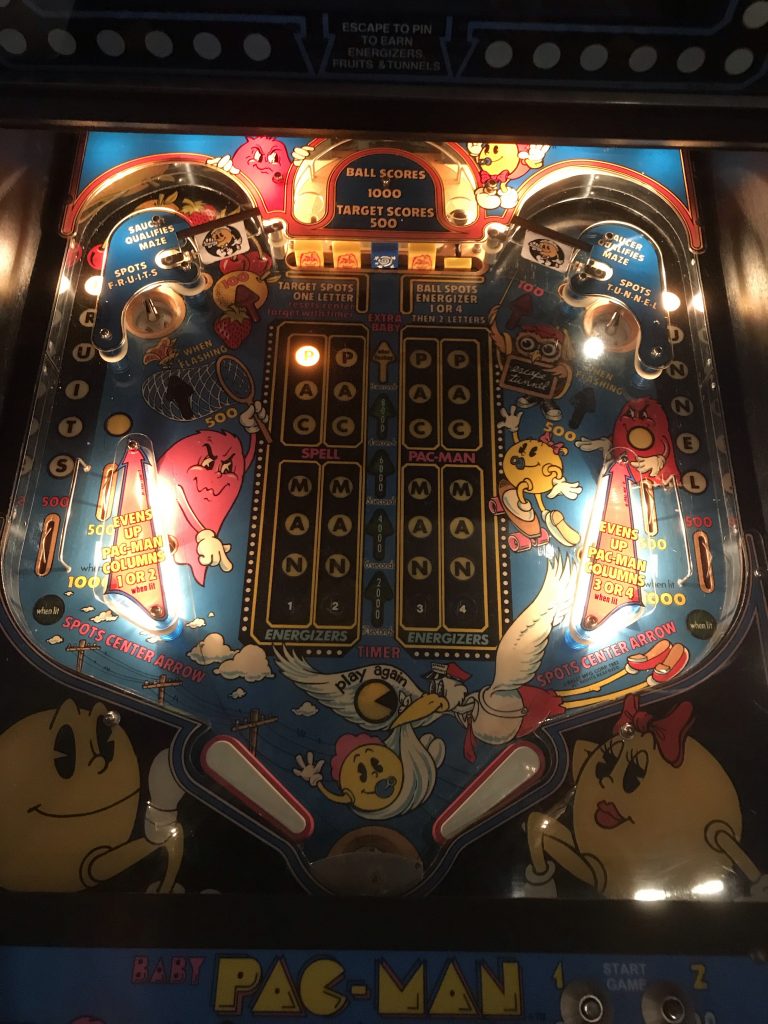
This is the glorious playfield. At first this may seem a bit overwhelming, I was sure overwhelmed at first. What the hell is an Energizer? Why do I need to qualify the maze? Why do they keep using the word spots? Thankfully the arcade portion has a few instructions for us before sending us into the fray of pinball.
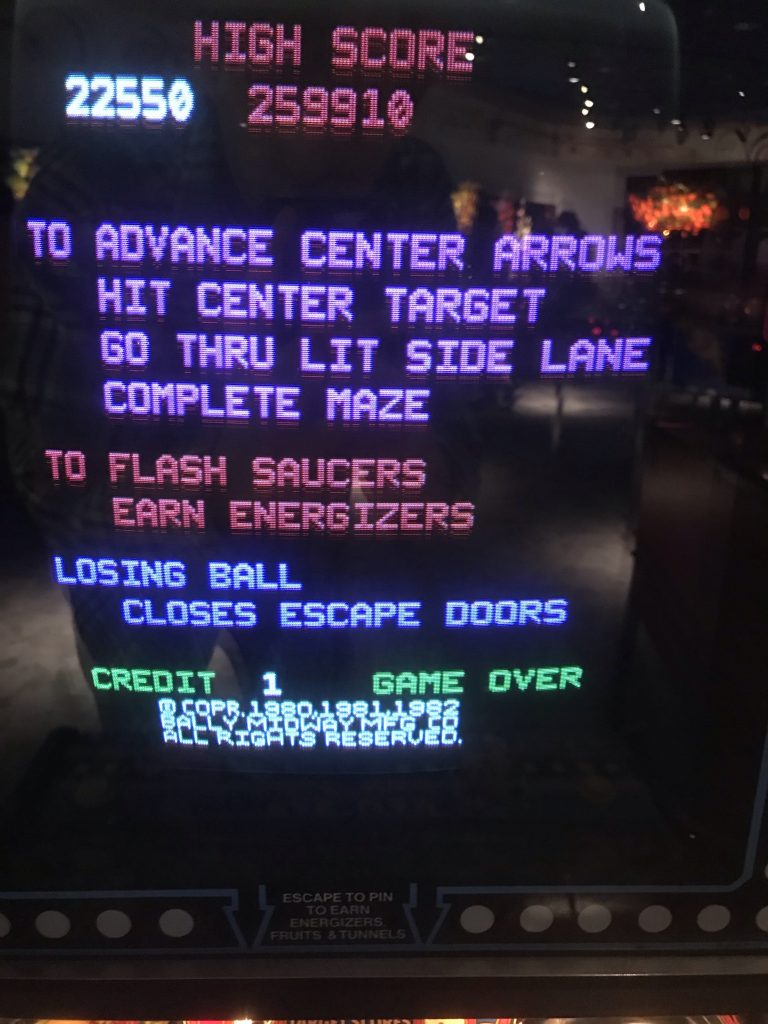
I came to learn that Midway terminology for the elements of a Pac-Man game and popular terminology for elements of a Pac-Man game are not one in the same. Energizers, as it turns out, are what Power Pellets are actually called. “Spots” as used on the instructions on the board, means “Lights up”. The center arrows light up if you complete the tasks in purple text. And when you lose the ball the game will put you back into the arcade mode, this time with doors over the escape tunnels, either completing the maze or dying to a ghost to open them again.
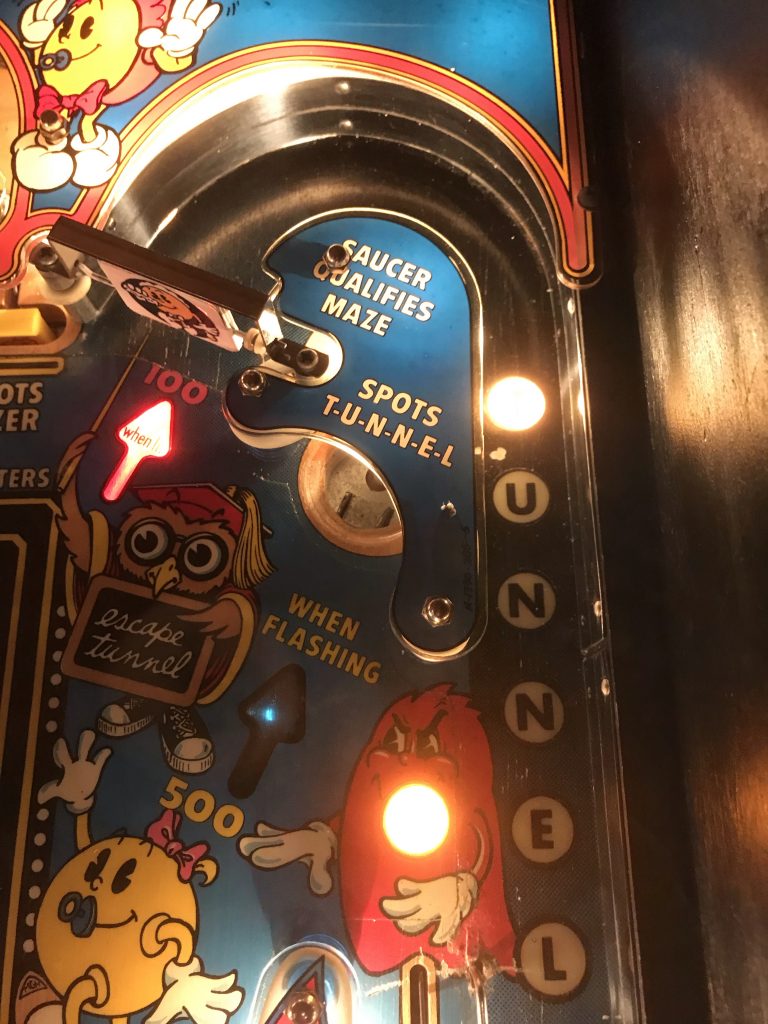
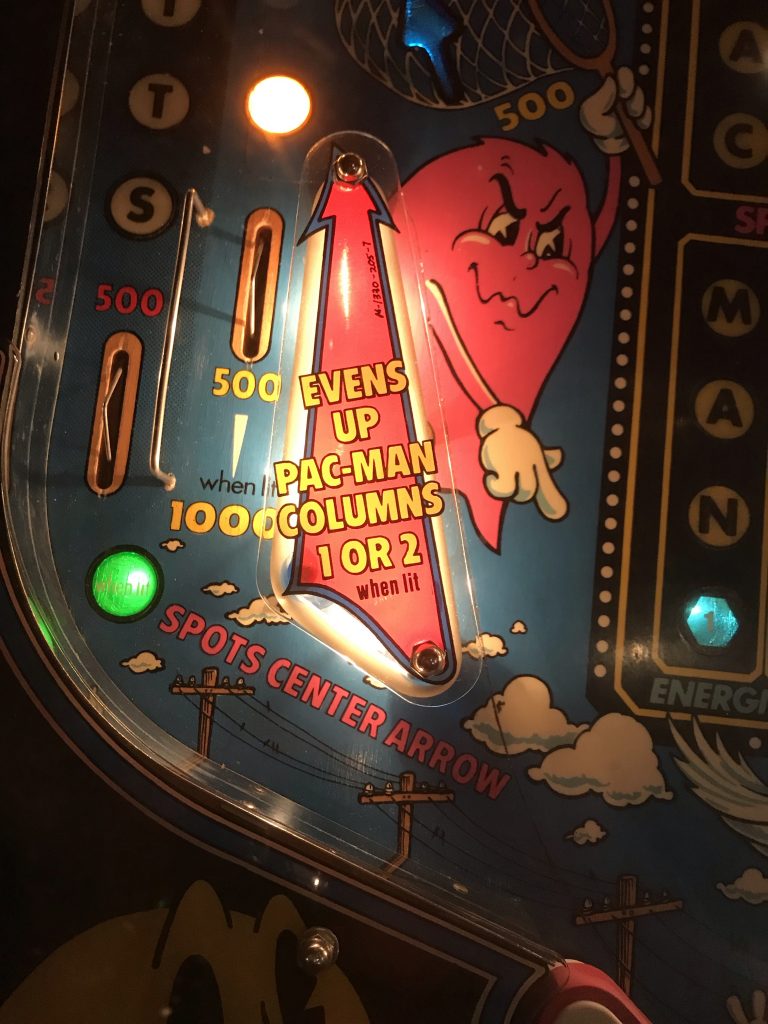
I was able to get a hang of the pinball elements pretty well given my limited time playing, I managed to spell PAC MAN a few times, earning an “energizer” in my arcade portion and having a bit of invincibility against the ghosts. I spelled out fruits as well, but I’m not sure what that did in the arcade portion of the game, if anything. For a game with button flippers, it felt fairly responsive and I was able to have good control of the ball.
The Pac-Man portion of the game gave me a harder time than the pinball portion, and as someone who has spent non-insignificant time trying to learn the AI patterns of the original, I can tell Midway did some wack things to the ghosts for this version. The mazes of this version was also a bit different, but nothing unexpected or terribly unconventional.
I doubt I’d go out of my way to play the game again, but I’m glad I finally got to experience a bit of odd pinball and gaming history. It’s certainly an amalgamation, but an peculiarly beautiful one.
IPDB entry for Baby Pac-Man, linked above as well: https://www.ipdb.org/machine.cgi?id=125
